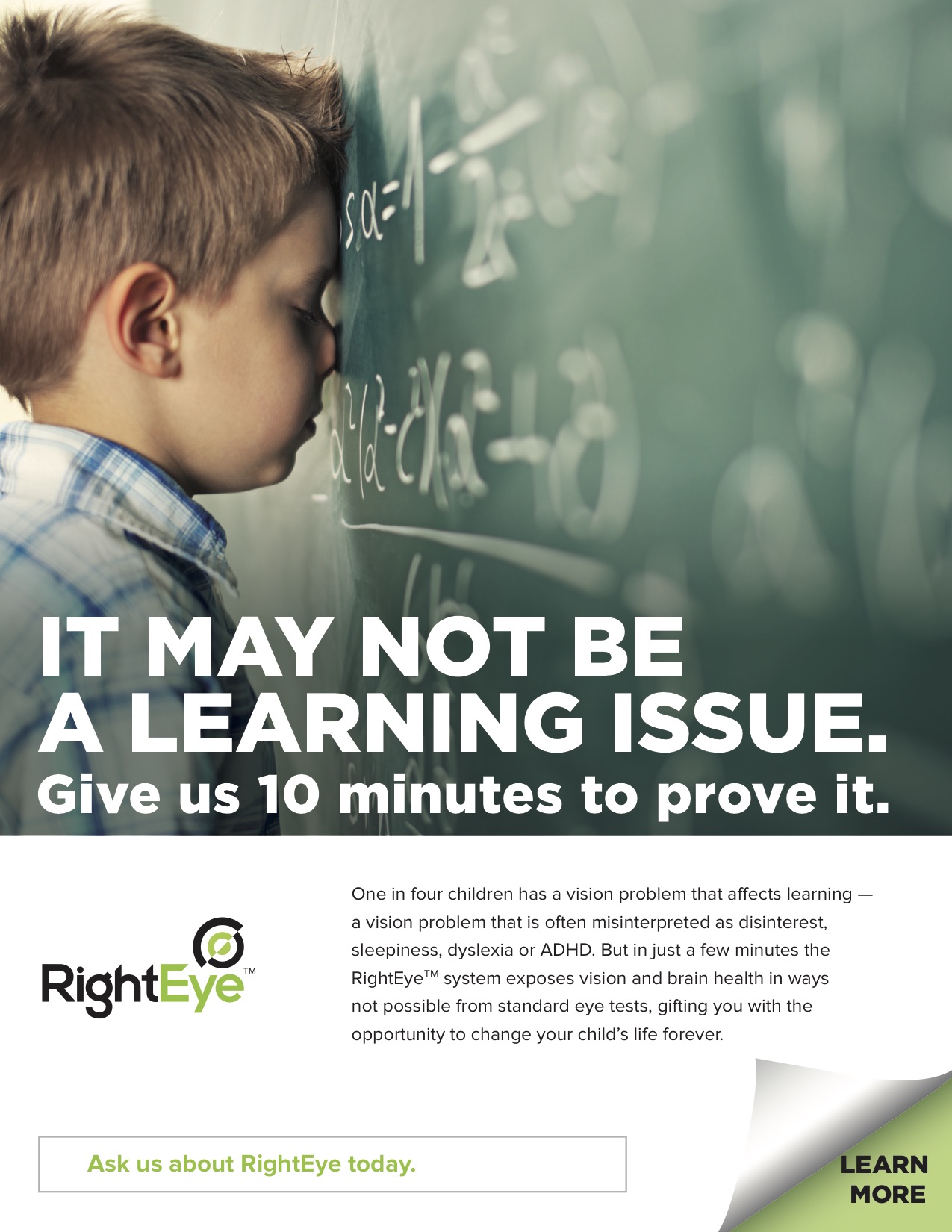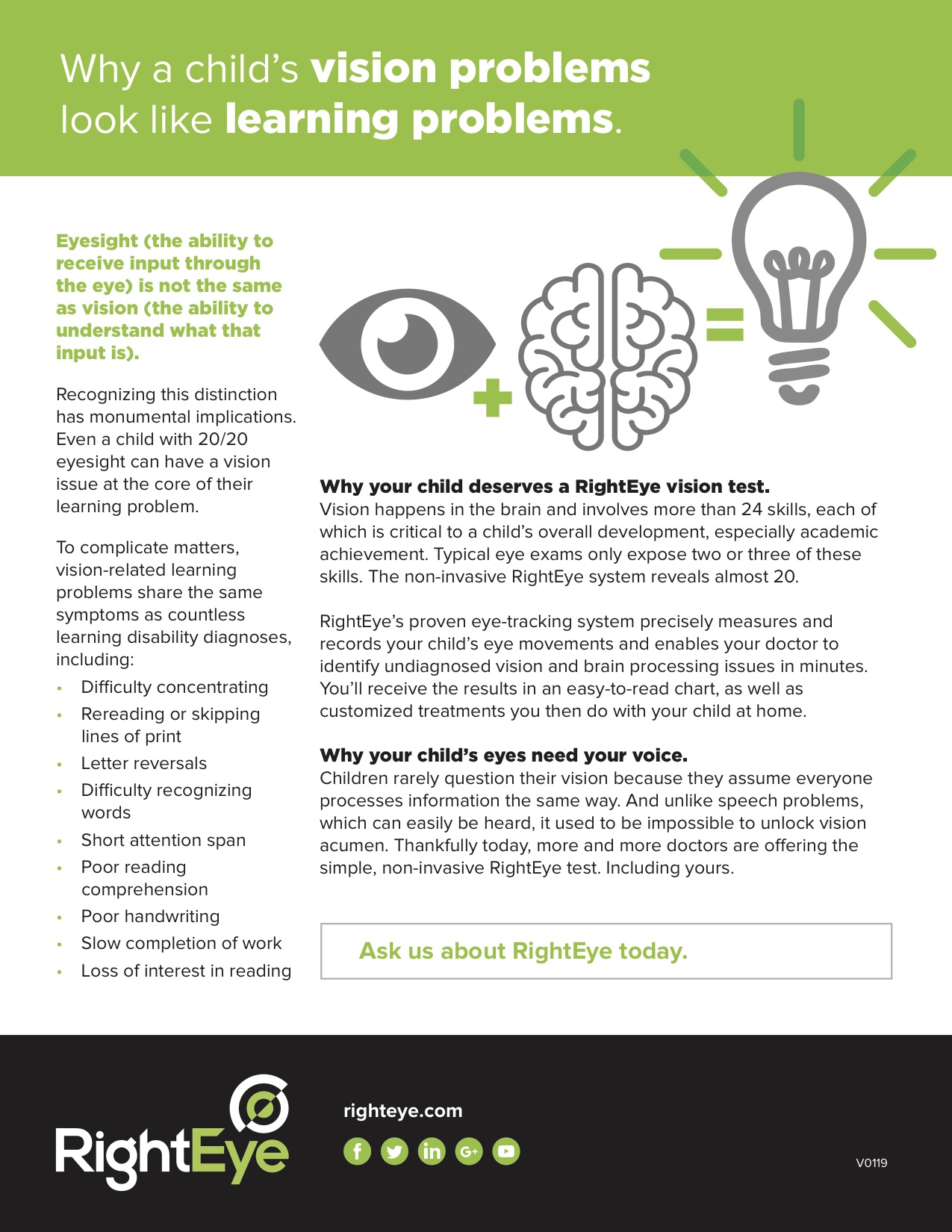Learning Related Vision Disorders
Eighty percent of learning is visual.
One in four school-aged children suffer from undiagnosed vision problems that affect their academic performance.
There is a difference between sight and vision and understanding this difference is important. Sight is the ability to see clearly at any distance. Vision is the ability to take this clear image and bring it into the eye in a smooth and accurate manner, then transmit the image through the optic nerve to the back of the brain where it is interpreted and made sense of by combining it with past learning experiences.
Learning Related Vision Disorders: Vision and Learning Disabilities “In human society, most information is acquired through the visual system. Uncorrected impairment of visual functioning can prevent the normal acquisition of information and lead to difficulties in learning… There may be subtle abnormalities of binocular functioning, accommodation to close visual targets, or higher processing of visual information that interfere with the learning process. Detection of any such abnormalities… at the earliest possible point in a child’s development is crucial to the prevention of subsequent learning disabilities that might otherwise ensue.”
Optimum Vision and Eye Care uses technologically advanced equipment to detect that the eyes are moving in a smooth and accurate manner. The RightEye uses infrared tacking technology to provide the doctor with information that can unveil a binocular dysfunction.
What is the RightEye screening all about? Follow this link for more information.
https://righteye.com/reading-eyeq/
https://righteye.com/functional-vision-eyeq/
https://righteye.com/wp-content/uploads/2019/03/RE-WEB-functional-8.5x11.pdf
https://righteye.com/wp-content/uploads/2019/03/RE-WEB-Learning-8.5x11.pdf
Learning Disabilities – A report to the United States Congress, Prepared by the Interagency Committee on Learning Disabilities, National Institutes of Health, Department of Health and Human Services, 1987 page 32.


